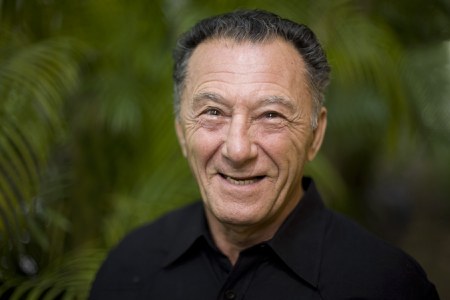There are some major flaws in our criminal justice system. These flaws result in innocent people going to prison. It is the ultimate miscarriage of justice — taking away the freedom of a factually innocent person while also allowing the guilty person to remain free.
There are a number of reasons for why innocent people get found guilty. The National Registry of Exonerations has identified six main causes:
- Perjury or False Accusation
- Inadequate Legal Defense
- False or Misleading Forensic Evidence
- Official Misconduct
- False Confession
- Mistaken Witness Identification
False or Misleading Forensic Evidence
When forensic evidence is presented in the courtroom, there is a general assumption that “if it is scientific, then it must be true.” The reality is much different.
Out of 3,159 exonerations tracked by the The National Registry of Exonerations, 728 or 23% listed False or Misleading Forensic Evidence as a contributing factor in the wrongful conviction. These are factually innocent people who went to jail for a crime they did not commit.
The statistics are even worse for cases that are exonerated by DNA evidence. While The National Registry of Exonerations tracks all types of exonerations nationwide, The Innocence Project focuses only on DNA exonerations. Brandon Garrett and Peter Neufeld from The Innocence Project conducted a thorough case study of persons who were wrongfully convicted due to invalid forensic evidence and later exonerated by DNA evidence. They found that in those wrongful conviction cases 60% of forensic expert testimony was invalid.
When the government calls these forensic experts to the stand, they carry authority in the eyes of jurors and judges. They show up in white lab coats and are automatically seen as trusted experts. But many times, these experts presented faulty conclusions that lacked scientific backing.
Let’s dissect the issue further. At the scene of the crime, among other evidence, detectives collect forensic evidence such as blood stains, hair pieces, and shoe prints, which are submitted for lab analysis. In court, forensic scientists will explain the results according to their expert opinion. As a result, the defendant may be found guilty. Types of forensic evidence commonly presented at criminal trials:
- Serological Analysis (Blood Typing)
- DNA testing
- Hair Microscopy
- Fingerprinting
- Bite Mark, Shoe Print, Fiber, Soil Comparisons
- Firearm Tool Mark Analysis
The first 2, blood typing and DNA testing, do have proper scientific testing techniques. But sometimes these tests are conducted improperly or the results are conveyed inaccurately or improperly on the trial stand by the scientist. Knowing that 38% of Americans have type O positive blood, is that conclusive evidence of the guilt of a defendant who also has type O positive blood like that found at the scene of the crime?
Regarding other forensic testing such as bite mark or shoe comparisons, the lab techniques have not been subjected to sufficient scientific evaluation. In fact, back in 1995, a federal judge ruled microscopic hair comparison testimony to be too scientifically unreliable.
What the Innocence Project study concluded was that in many cases, the science, rather than the scientist, is inadequate.
Further compounding the problems, crime labs are understaffed and the experts and technicians are forced to hurry through tests and may not even perform tests at all. Take for example the case of Annie Dookhan, the state’s drug chemist in Boston who falsified the results in nearly 34,000 cases.
When you have trusted people in white coats presenting bad science and mishandled tests, you have a recipe that lands innocent people in prison.
False or Misleading Forensic Evidence Destroys Real Lives
Take the case of Luis Diaz who wrongfully served 25 years in prison. Diaz was wrongfully convicted of being a serial rapist who attacked 25 women between 1977- 1979.
According to The Innocence Project:
The state presented the victim identifications of Diaz and improper testimony from a forensic analyst. Serology testing on swabs collected from the body of one victim showed that the victim and the perpetrator shared the same blood group markers. The analyst testified improperly that 10% of the world’s population was excluded by this evidence. When the evidence being tested is a mixed stain of semen from the perpetrator and vaginal secretions from the victim – and testing does not detect blood group substance or enzymes foreign to the victim – no potential semen donor can be excluded because the victim’s blood group markers could be “masking” the perpetrator’s. Under such circumstances, the failure to inform the jury that 100% of the male population could be included and that no one can be excluded is highly misleading.
The defense focused on the identifications. Most of the victims had described the attacker as a taller and heavier man. Descriptions of facial hair and skin also differed from Diaz’s appearance. The defense also showed that none of the victims noticed any unusual odor from the attacker. Diaz, because of his job as a fry cook, smelled heavily of fried onions after his shift.
After serving 25 years, Diaz would be exonerated by DNA evidence.
Read more at: https://innocenceproject.org/overturning-wrongful-convictions-involving-flawed-forensics/
Our Clients are entitled to a Bill of Rights which states:
- Our clients have the right to expect, we will be proactive in communication. You will hear it from us first. We will return all phone calls, texts and emails promptly.
- Our clients have the right to expect plain speaking, straight shooting. No B. S.
- Our clients have the right to expect us to do it right the first time, every time.
- Our clients have the right to expect us to be on time and professionally prepared for all court appearances, and all meetings.
- Our clients have the right to expect that they will be fully informed at all times.
This is our promise to you. Call today to get us on your side: (717) 657-3900.

